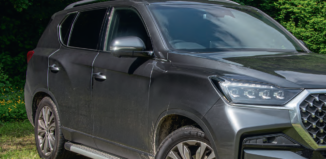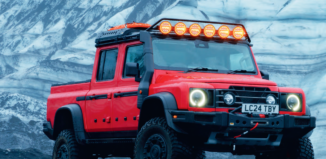How would you like to choose the weather any day of the year? That is exactly what Ford’s new “Weather Factory” will enable engineers to do as they test forthcoming vehicles in the most demanding conditions from around the world.
Altitudes higher than Mont Blanc, the tallest Alpine peak, vehicle and wind speed of up to 155mph, snow, glaring sunlight and rain are among conditions that will be simulated at Ford’s state-of-the-art Environmental Test Centre.
As well as turning low-lying Cologne, in Germany, into the highest point in Western Europe at the touch of a button, the multi-million euro facility will be the most advanced automotive facility of its kind. The first to simulate altitudes of 5,200 metres, the centre will also offer extremes of -40, the average winter temperature in eastern Siberia, to +55 deg Centigrade – just 1.7 deg below the highest-ever air temperature globally recorded – as well as 95 per cent humidity.*
In the UK, Ford Dunton’s Environmental Test Laboratory has been capable of simulating altitudes up to 3,660m since 1999 – as well as temperatures from -40 to +55 deg Centigrade.
The capabilities of the new Cologne Environmental Test Centre can be seen in this new animation.
“With industry-first features, like the high altitude testing and the ability to simulate heavy snow, this new test facility offers a toolkit that will help us to continue to develop future best-in-class vehicles,” said Joe Bakaj, vice president, Product Development, Ford of Europe. “This is a significant step forward that will enable Ford to efficiently simulate the most demanding environmental conditions around the globe under repeatable conditions.”
The centre – which Ford expects to be fully operational later next year – will enable engineers to work on up to nine different vehicles simultaneously, testing comfort, safety and operational capabilities including electrical performance, braking, air conditioning and pulling heavy loads.
The football pitch sized facility will cover an area of 5,500 square metres, include two climate wind tunnels; a high-altitude lab; and four temperature controlled test chambers, three of which will also facilitate humidity testing. It will also facilitate testing of Ford’s expanded line up of performance cars and sports cars, which includes the acclaimed Focus RS, Focus ST, and Ford Mustang, in conditions of higher wind speeds. And it will be used to test all front-wheel, rear‑wheel, and all-wheel drive vehicles.
Ford test facilities in Europe also include Lommel Proving Ground, in Belgium, home to a specific pothole-testing track, side-wind tests, and saltwater and mud baths. Ford vehicles are regularly subjected to as much as 3.5 million miles of punishing real-world durability testing, which can include locations as demanding as the Mojave Desert, in the U.S.; the Arctic Circle; and the Grossglockner High Alpine Pass, Austria.


